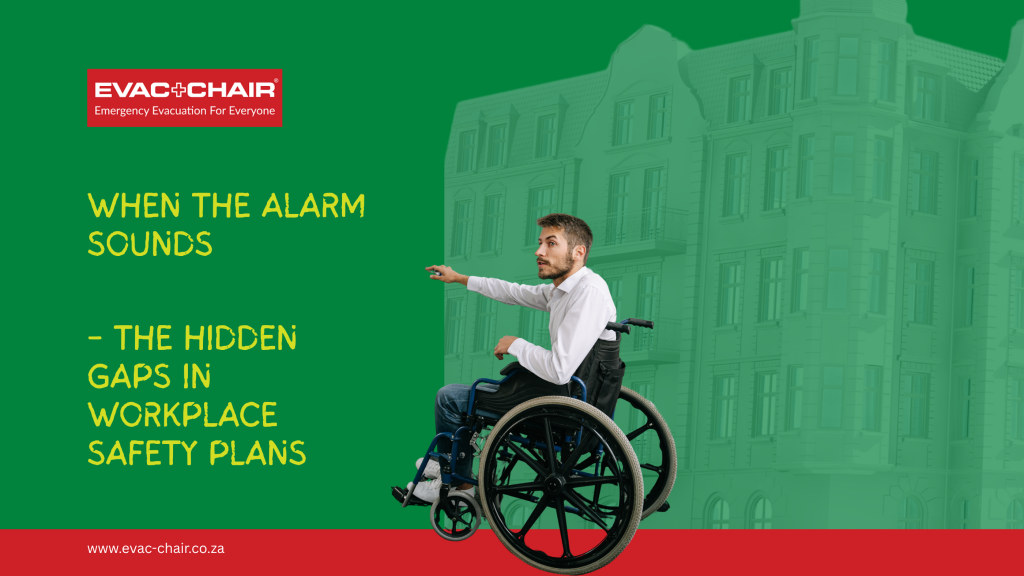Emergency plans are only as strong as their ability to protect everyone. Yet, in many workplaces, there are glaring gaps that leave people with disabilities, injuries, or mobility issues at risk.
The Unseen Risk
Most evacuation procedures assume everyone can walk, see, hear, and move quickly. That’s simply not the case. An employee recovering from surgery, someone using a wheelchair, or a visitor with temporary mobility challenges could be in serious danger without proper planning.
These hidden gaps in safety plans often only come to light when it’s too late – during a real emergency. National Safety Month provides the perfect opportunity for organisations to revisit, rethink, and revamp their current procedures.
What Often Gets Missed
Here are some common oversights:
- Evacuation chairs are not standard in many buildings, even those with multiple floors.
- Staff training is often limited to basic fire drills that exclude people with disabilities.
- Exit routes aren’t always accessible or clearly marked for everyone, including those with visual or cognitive impairments.
- Visitor protocols don’t account for varying physical abilities, meaning guests are often left out of safety briefings or planning entirely.
These oversights may not be intentional, but they are dangerous. In a crisis, seconds count – and confusion kills.
A Better Way Forward
To create a truly inclusive safety culture, organisations should:
- Conduct accessibility audits of emergency routes and exits.
- Ensure evacuation chairs are visible, functional, and readily accessible.
- Provide comprehensive training that includes assisting individuals with limited mobility.
- Include diverse scenarios in drills, such as evacuating someone with a temporary injury, an elderly individual, or a child.
Inclusivity in safety isn’t a luxury – it’s a necessity. It’s about readiness, respect, and responsibility.
The Bigger Picture
Organisations that take the time to address these hidden gaps not only reduce liability and risk but also foster a culture of trust and accountability. Employees and visitors alike feel more secure, knowing their well-being is truly considered.
Let National Safety Month be the push to review your building’s emergency strategy. Because when the alarm sounds, it’s too late to make a plan.

